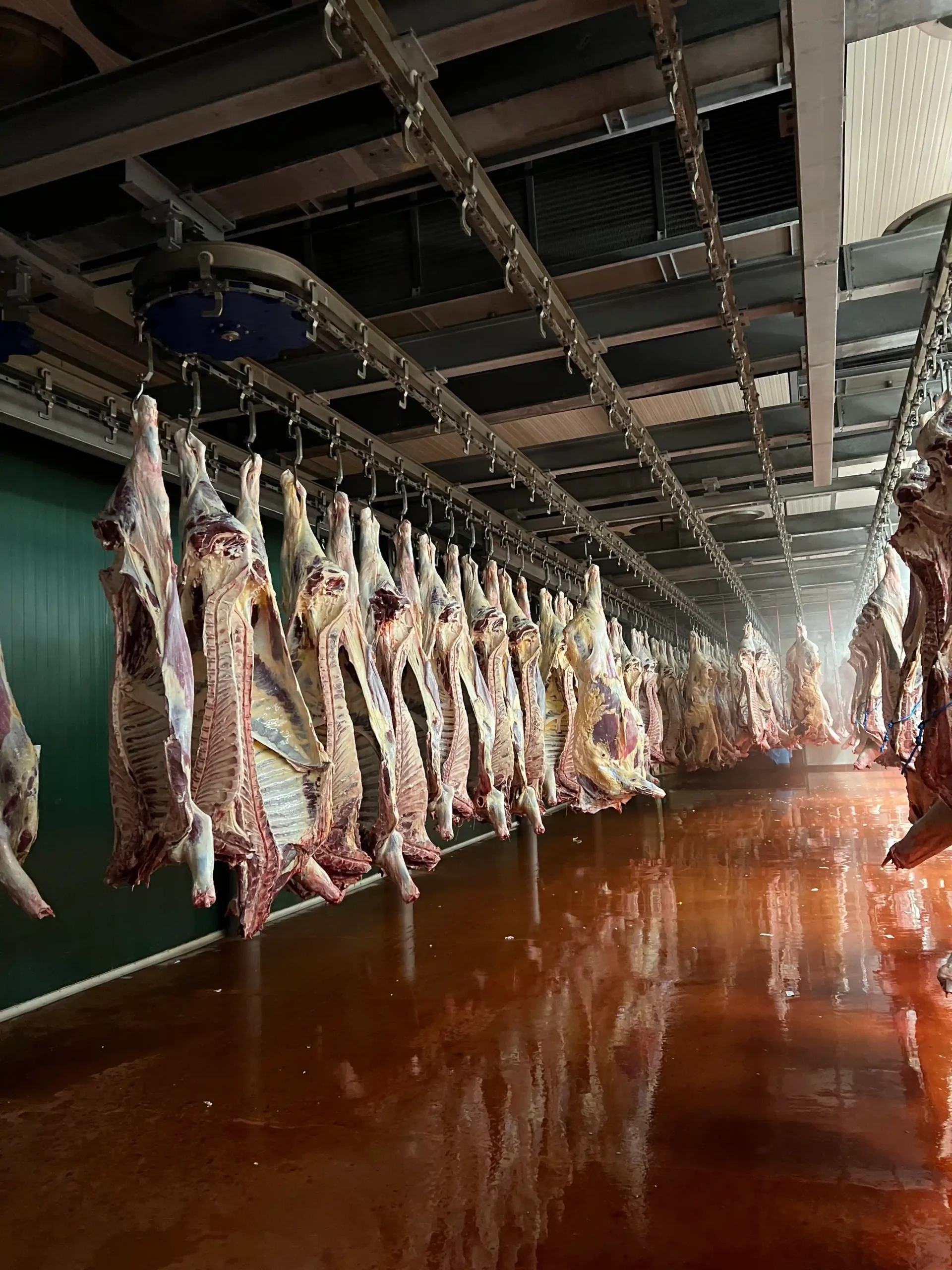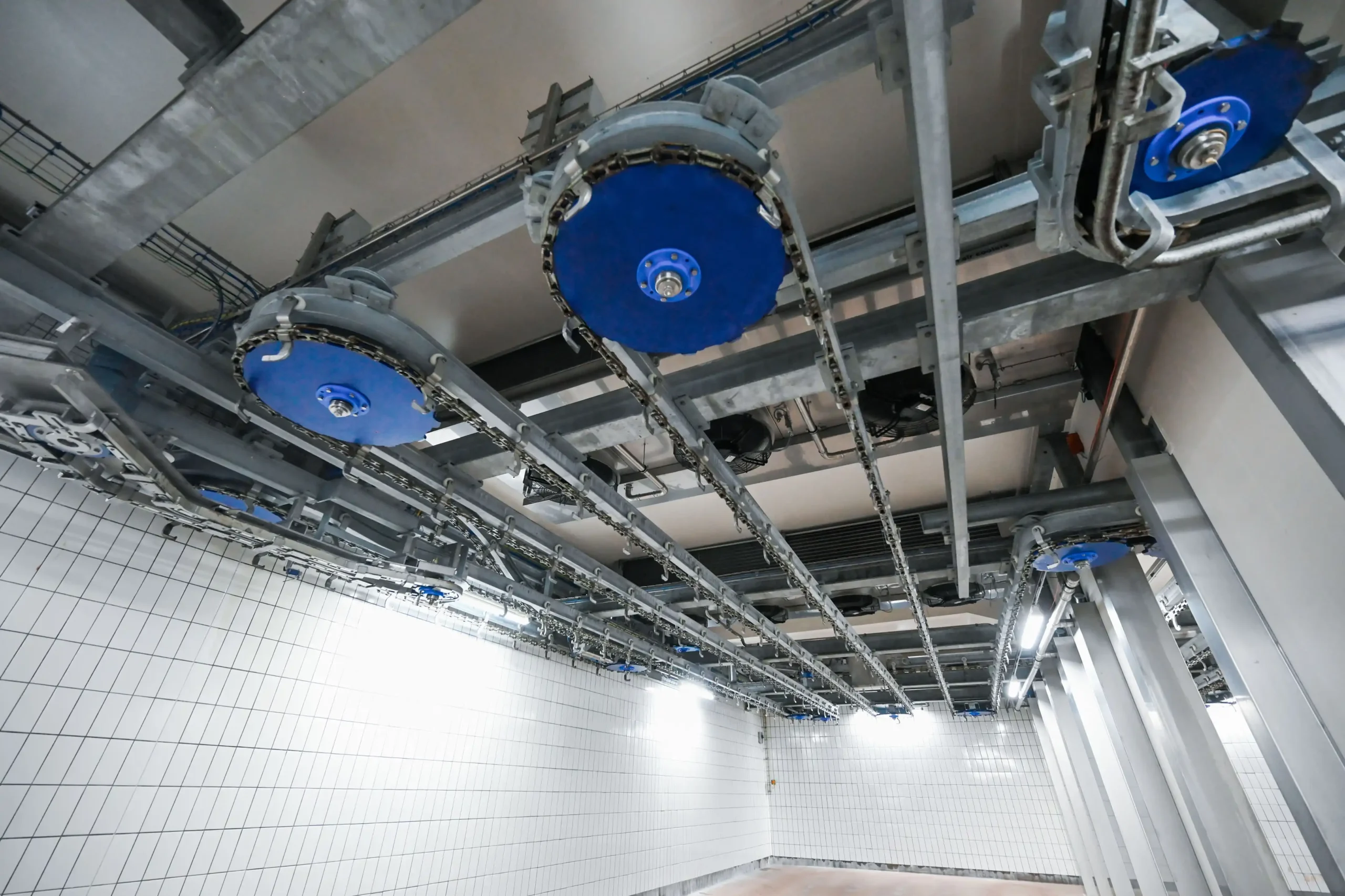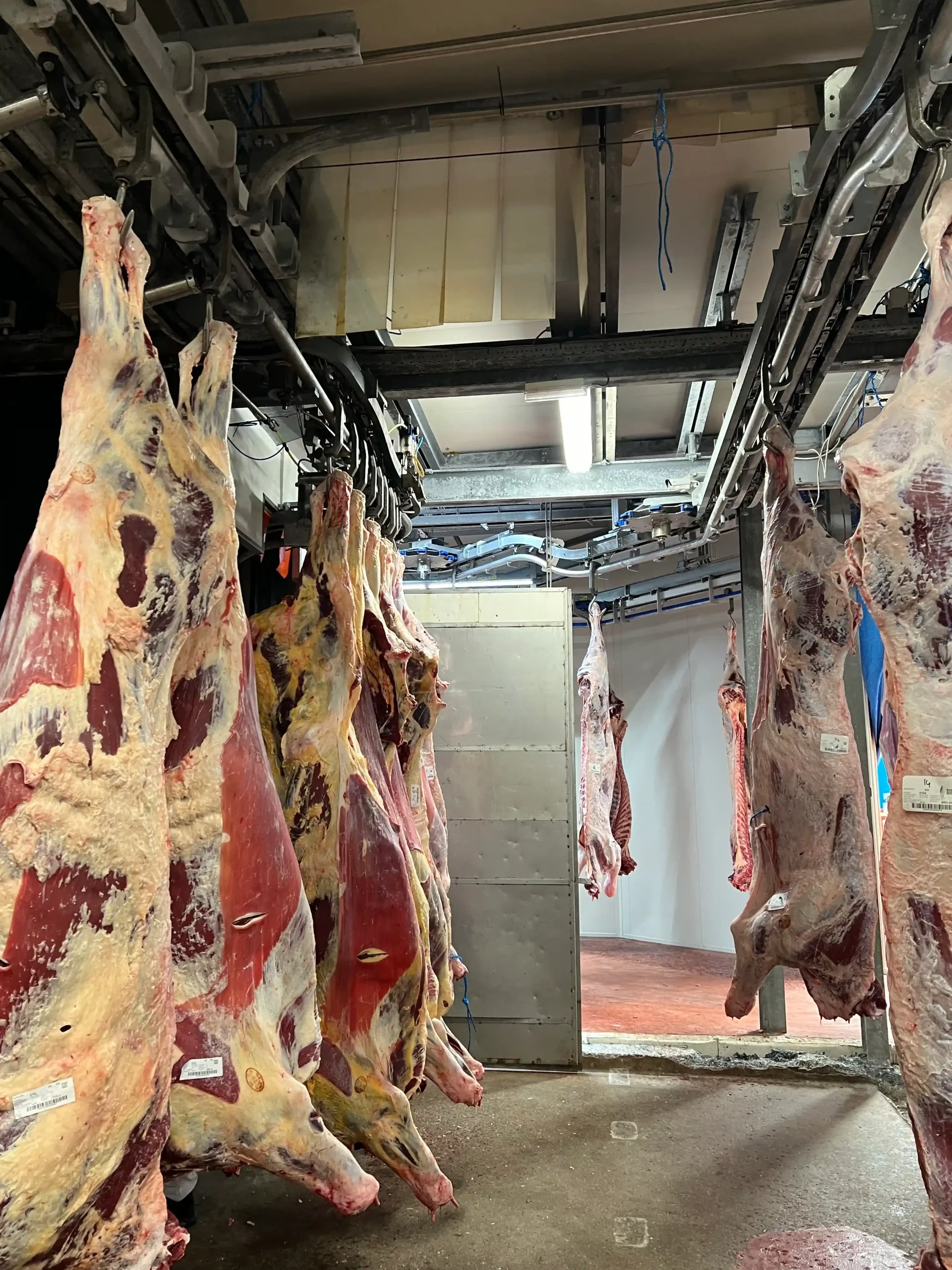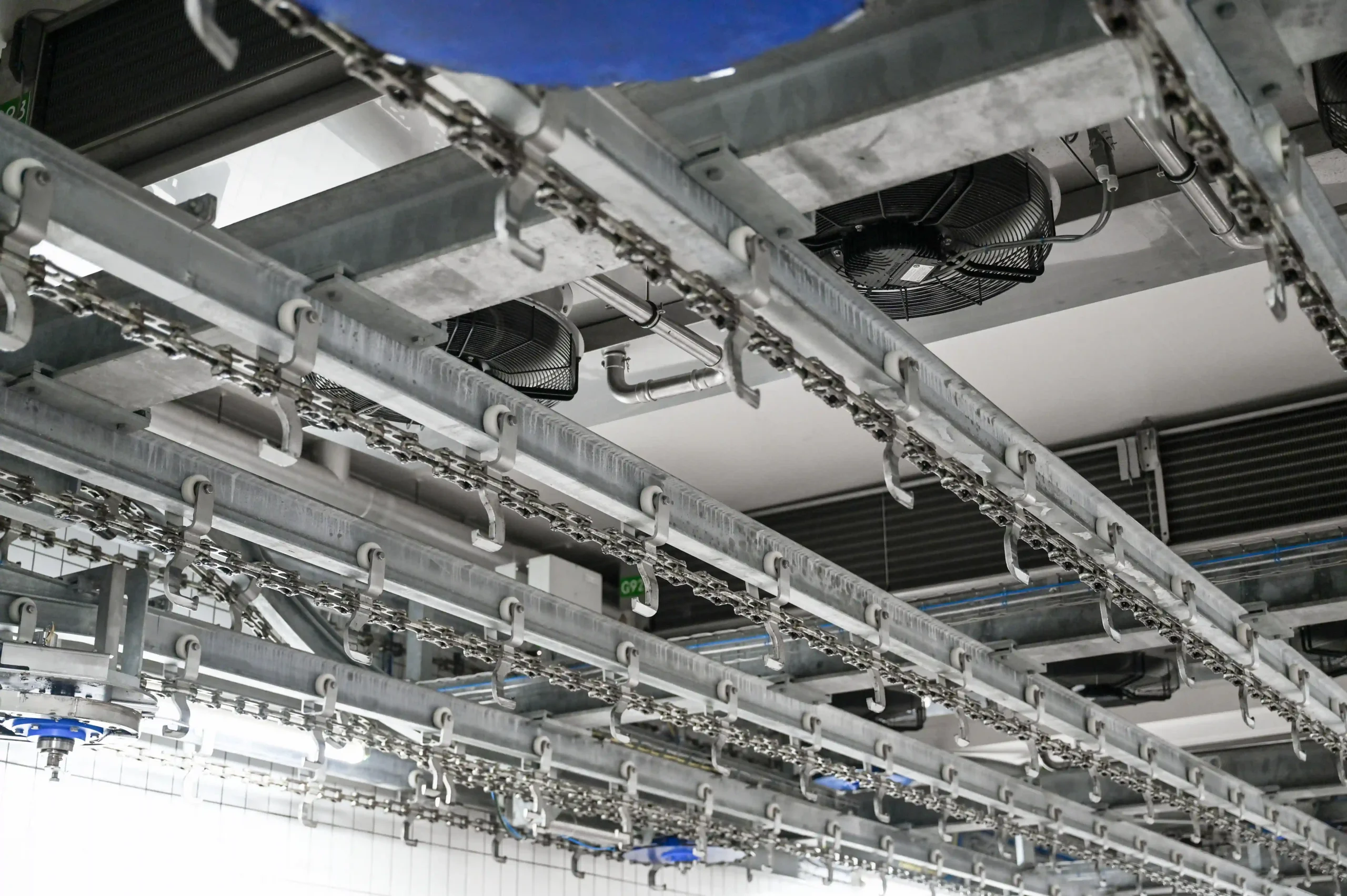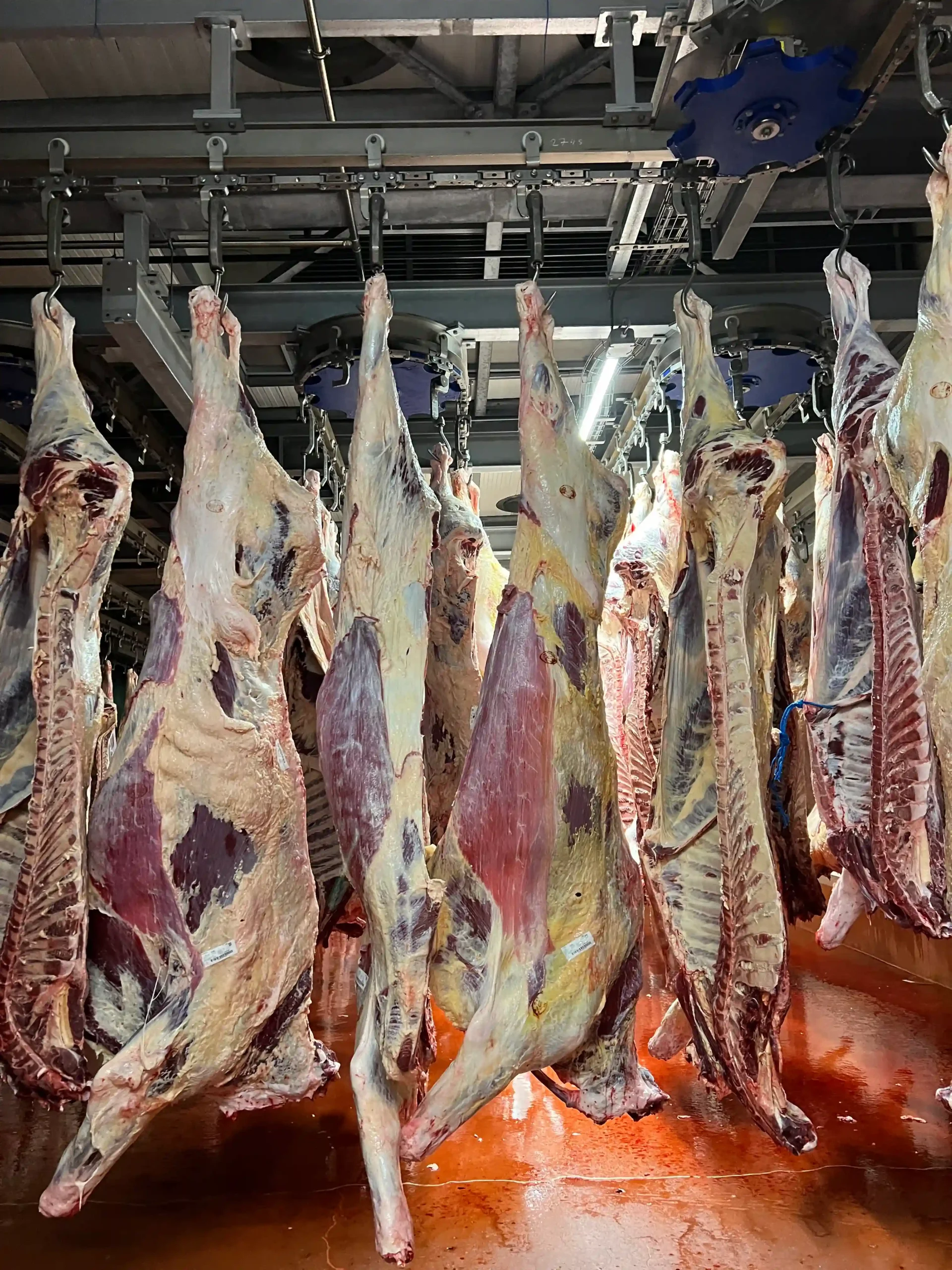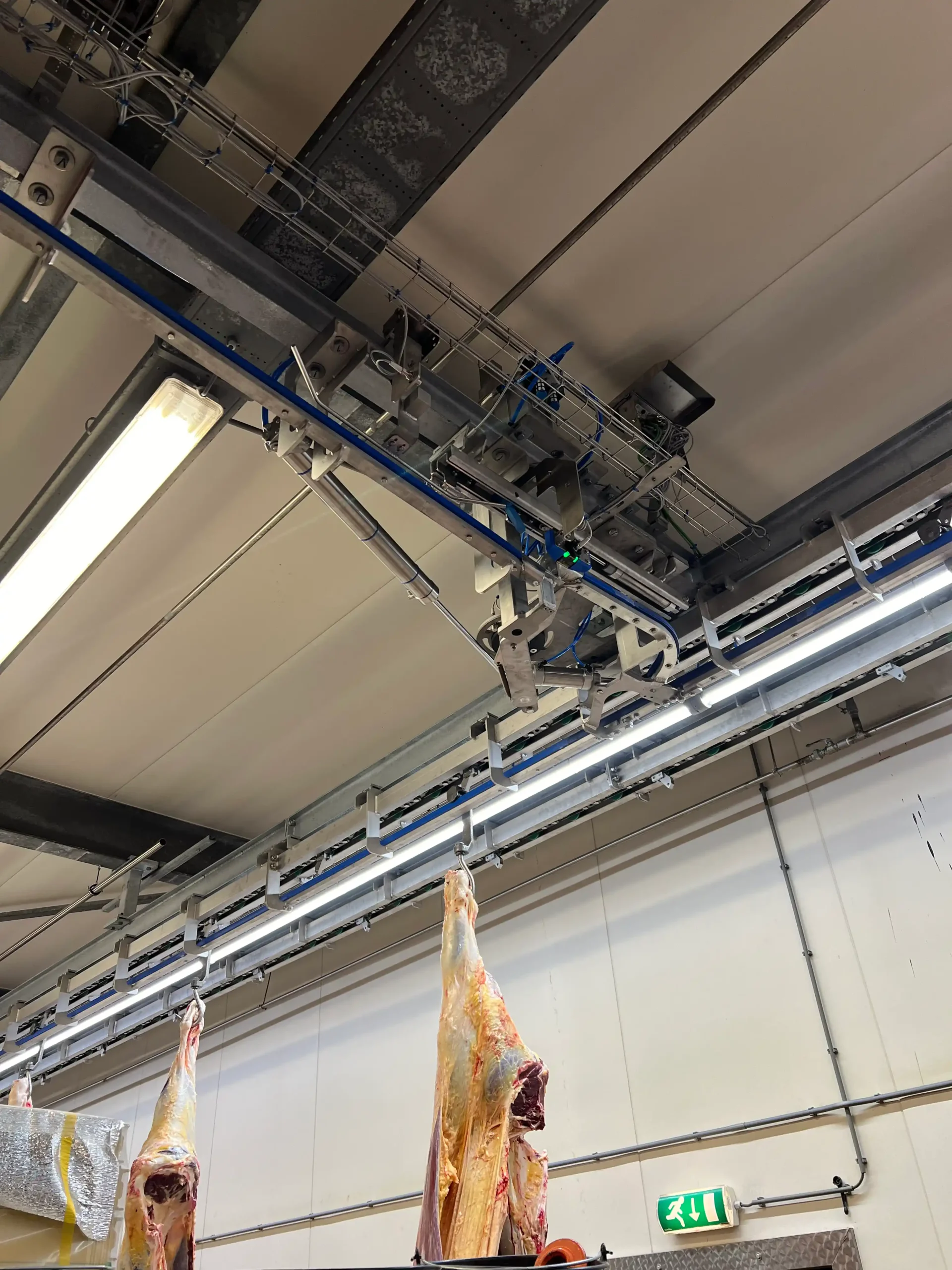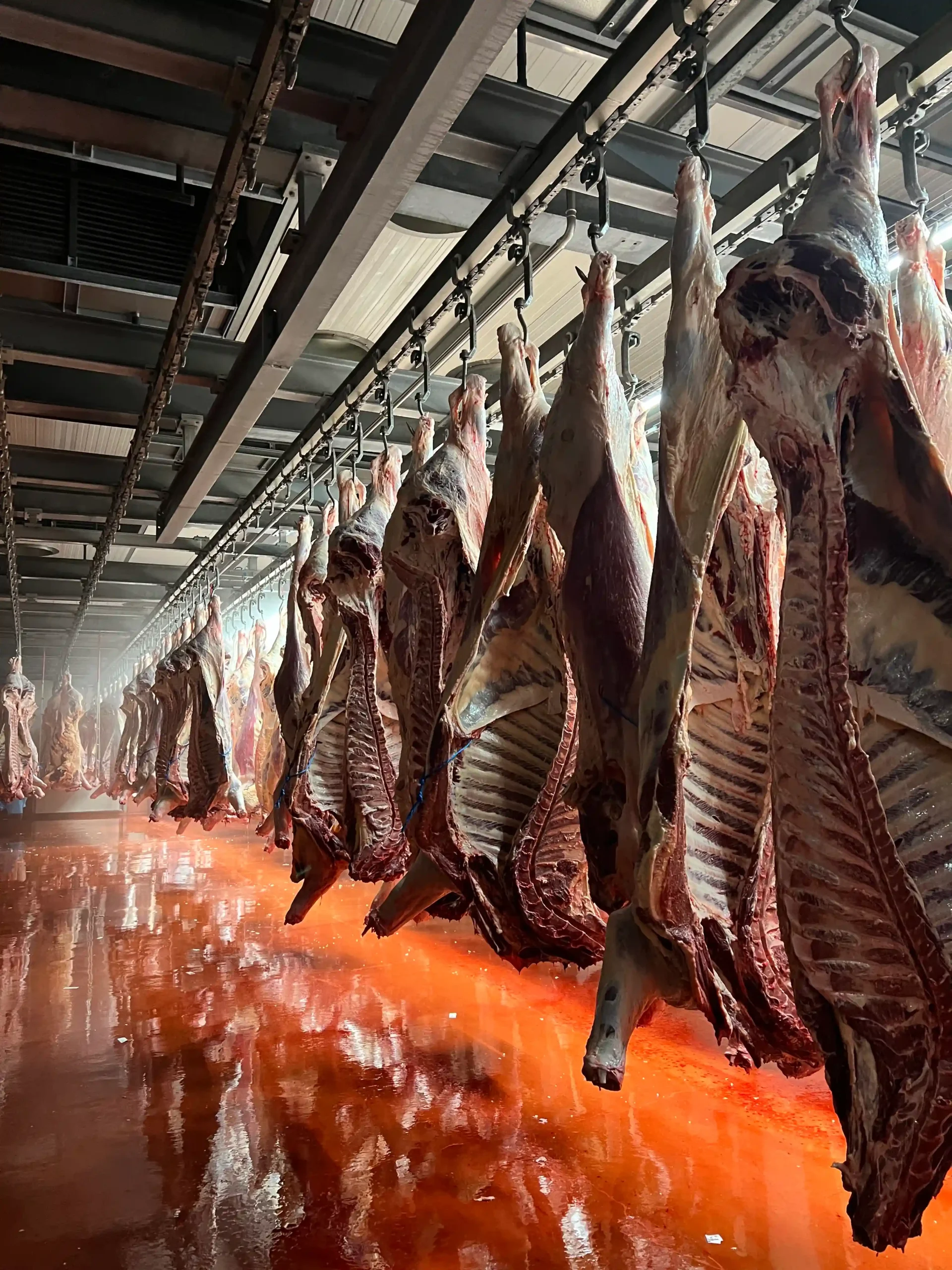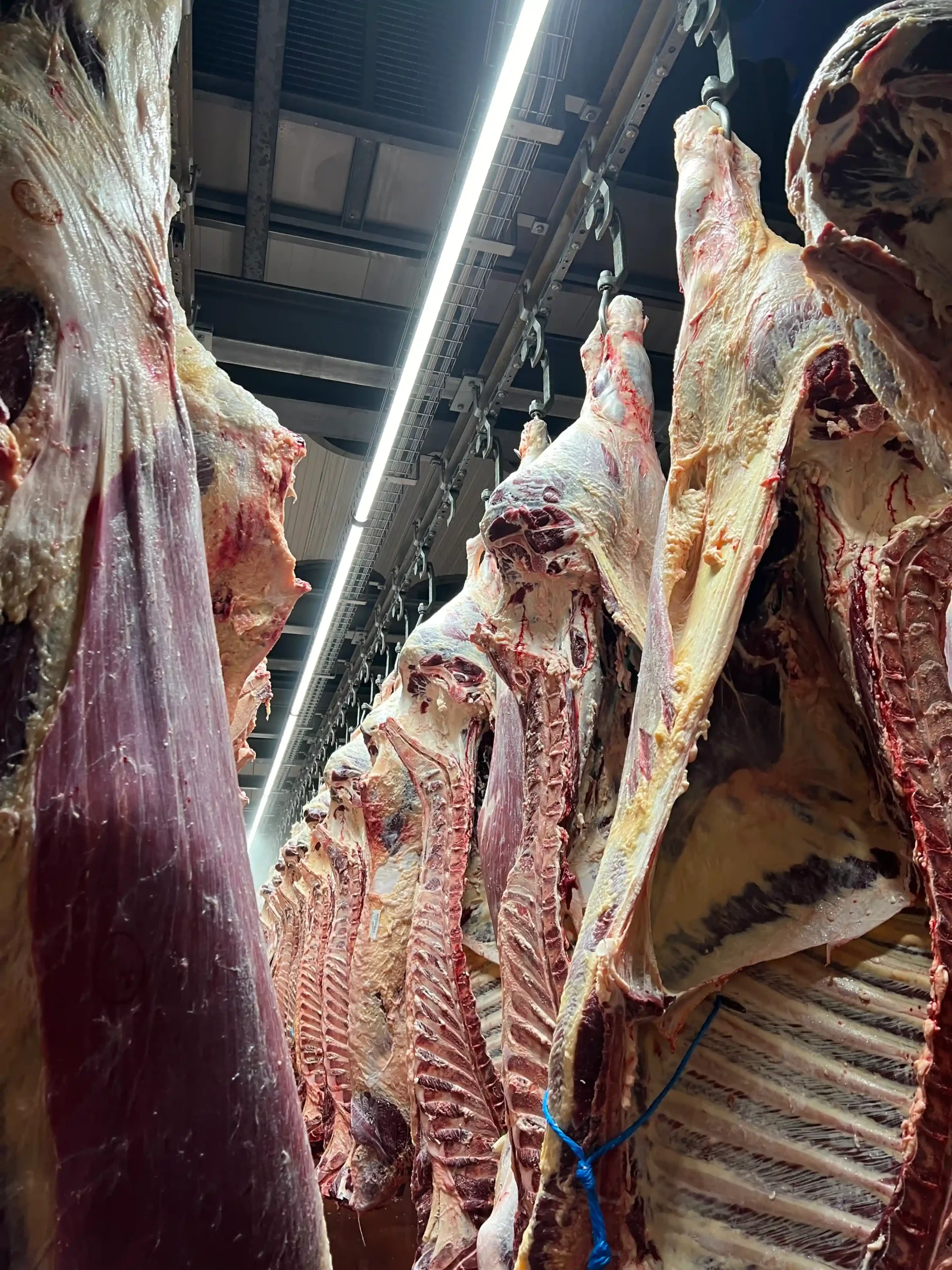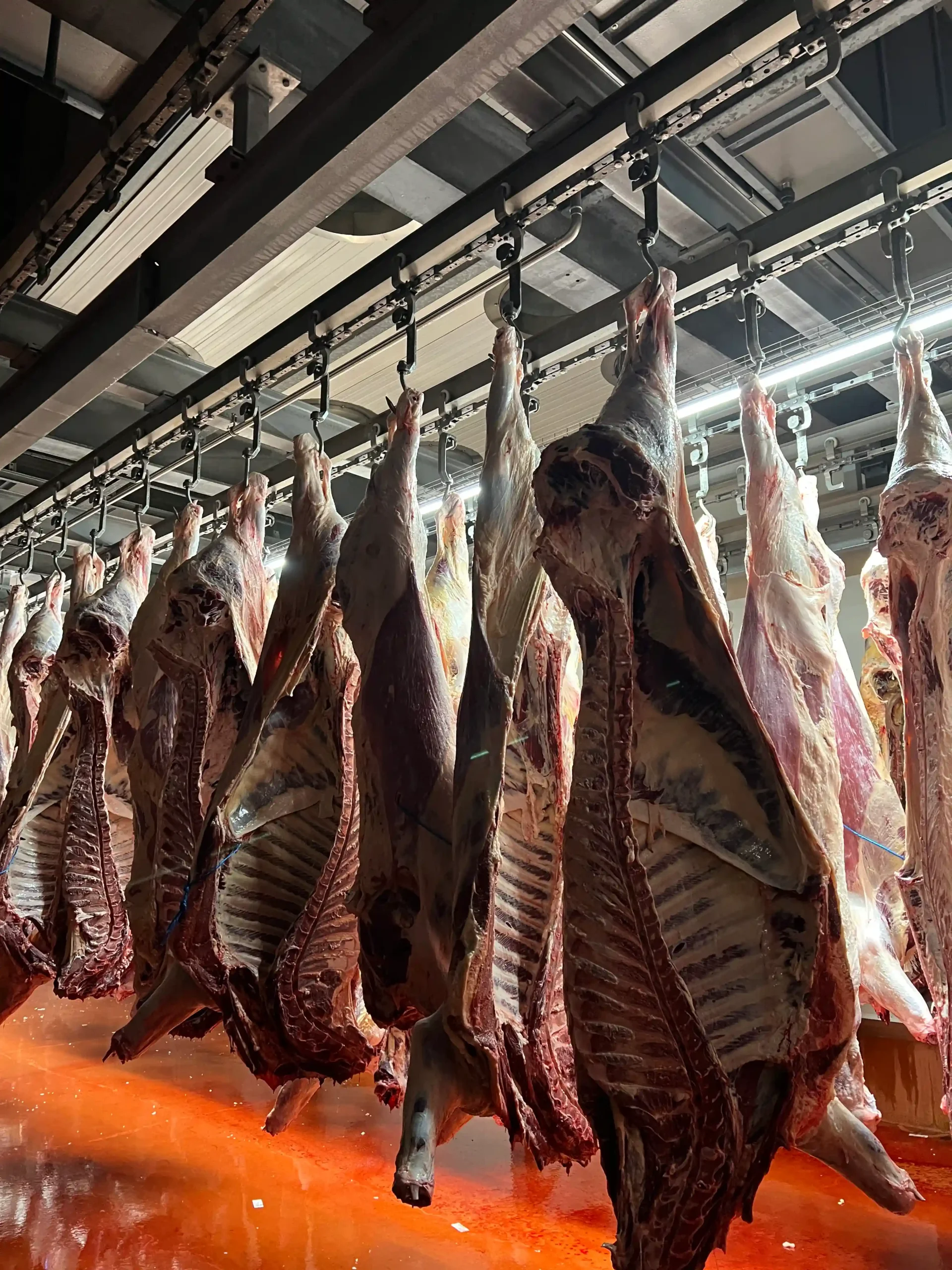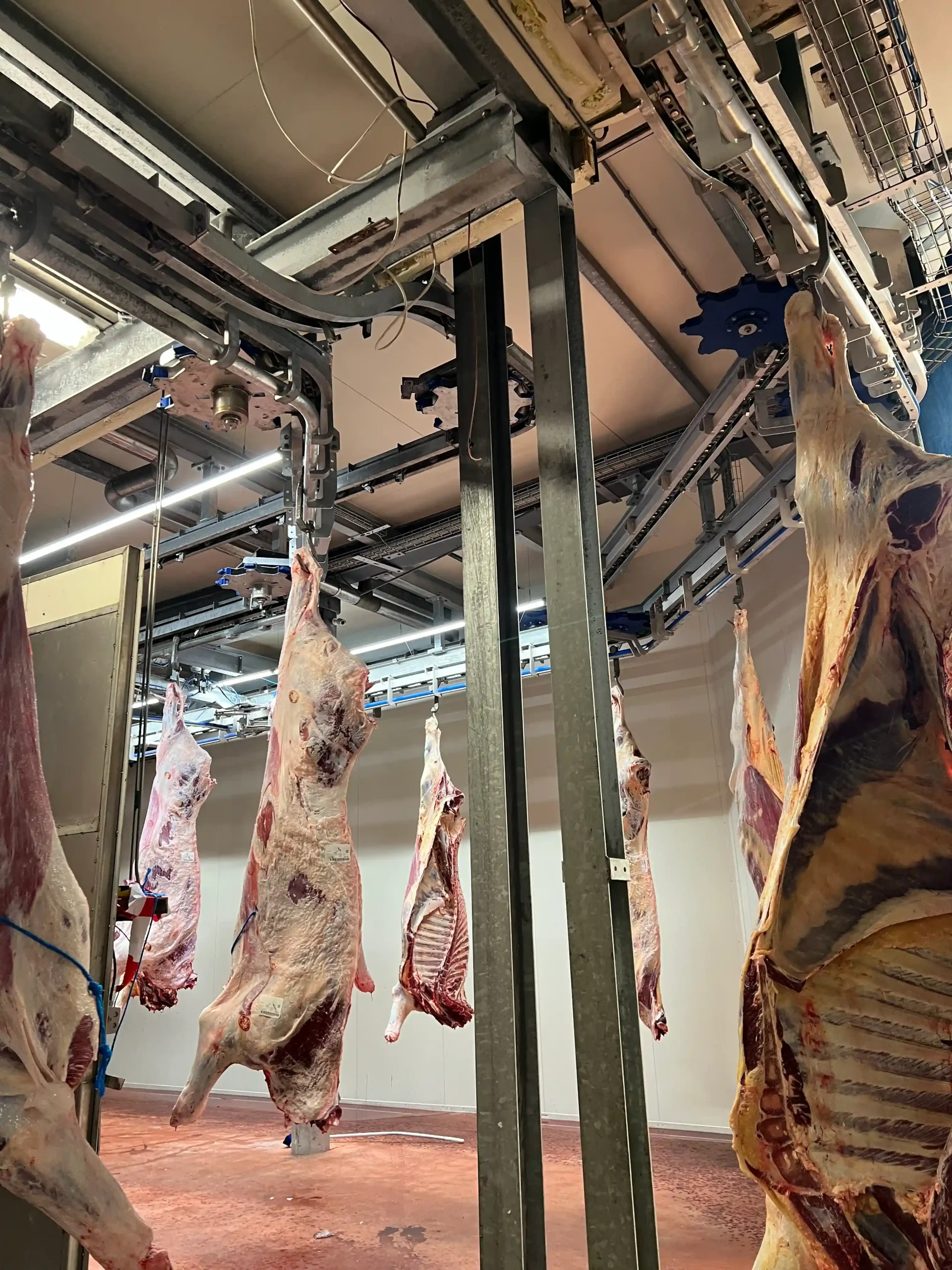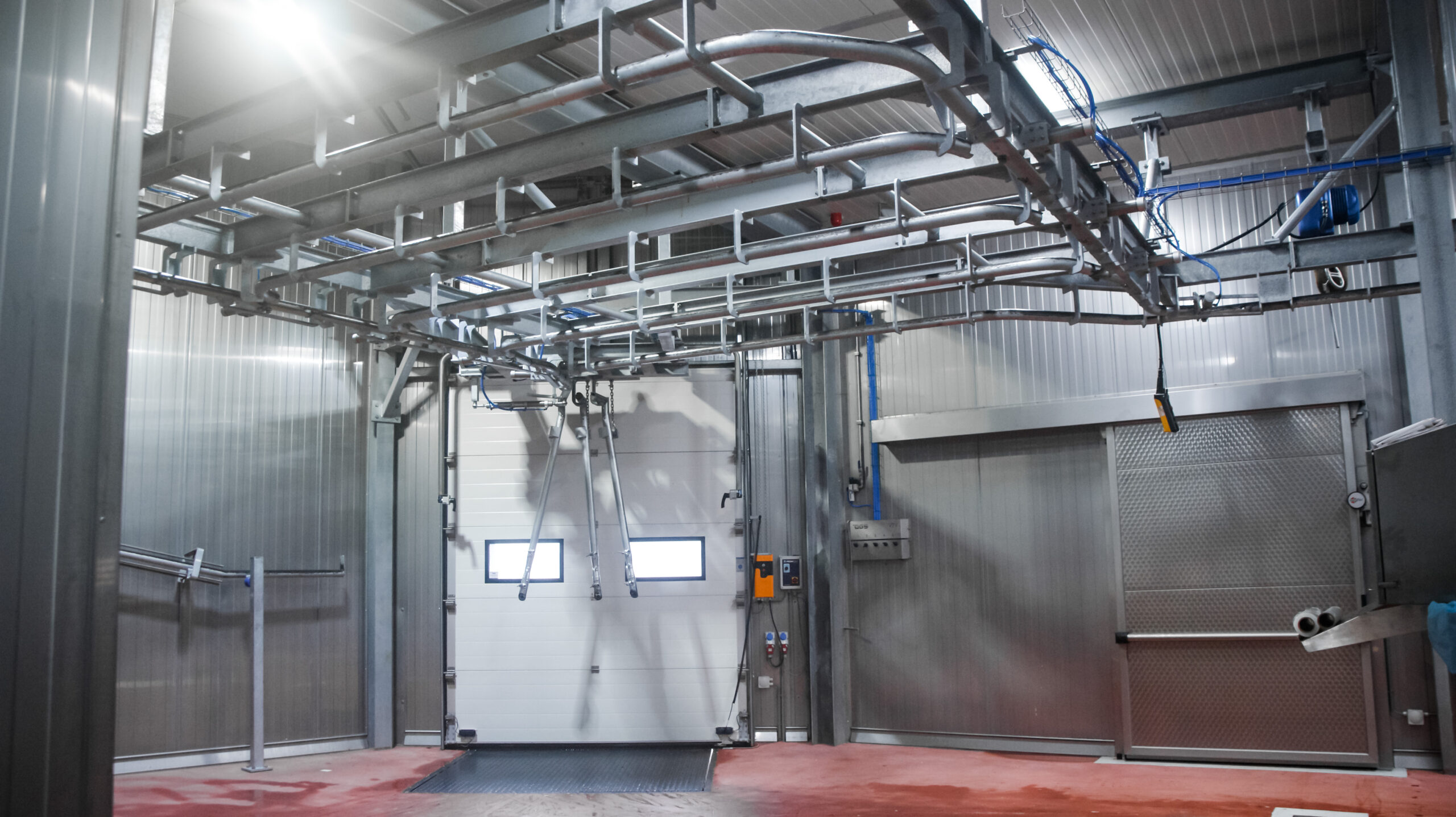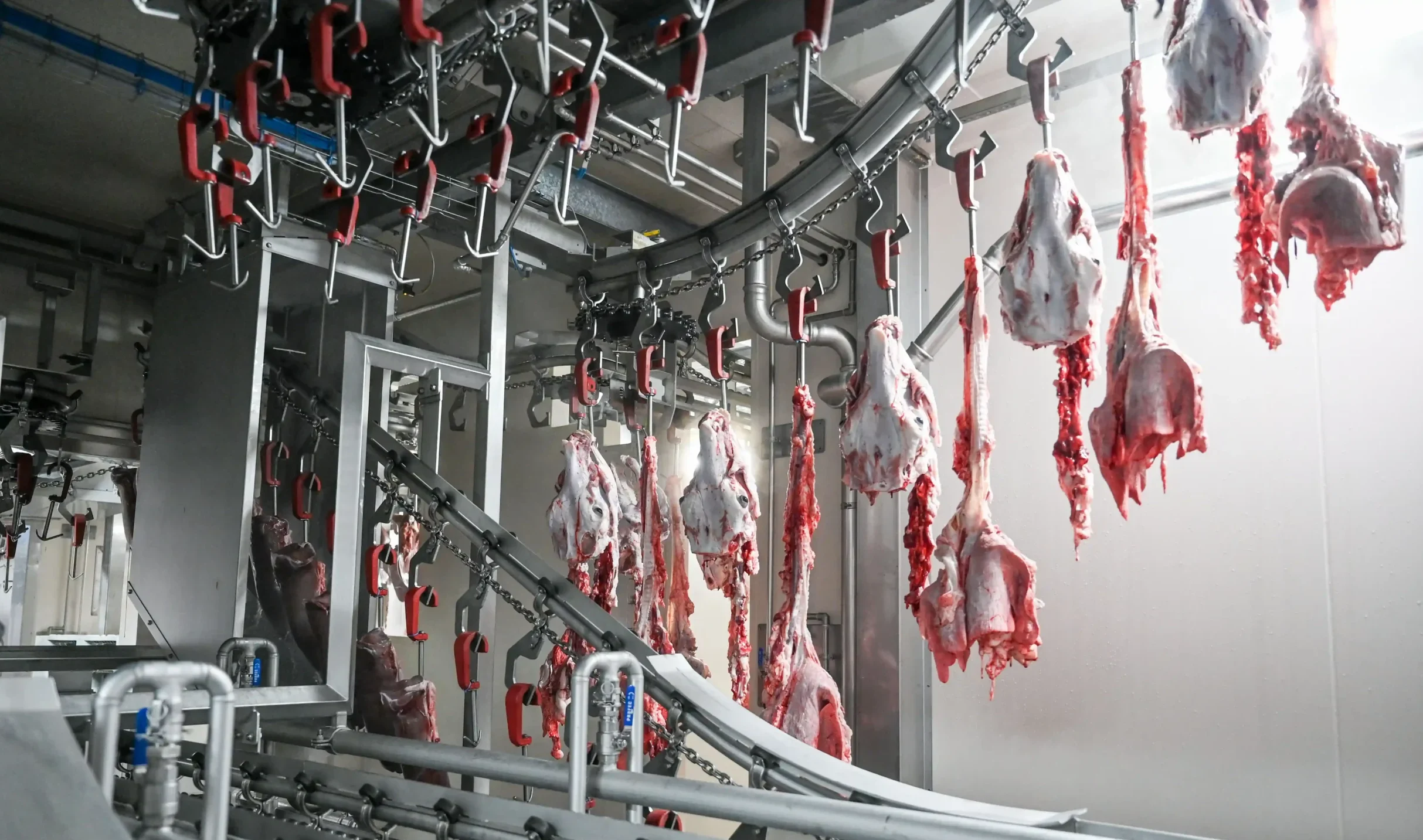Quick Cooling Techniques for Slaughterhouses
Accelerated meat cooling immediately after the slaughter process reduces drip loss and increases yield. Rapid cooling is therefore an essential step in optimizing the meat processing process in slaughterhouses. In addition to improved meat quality, it also shortens the overall cooling time, resulting in a more efficient process.
There are three main types of rapid cooling used in slaughterhouses: spray chillers, dry chillers (non-freezing), and quick chillers (freezing chillers). These methods vary in temperature and process but all aim to shorten the total cooling time for the meat product. The type of cooling deployed depends on customer preferences.
Spray Chillers:
This process utilizes water cooling, with water particles sprayed on the carcass. In collaboration with the chosen cooling supplier, DGS develops the appropriate transport system for optimal cooling time, yielding favorable results for drip loss.
Dry Chiller (Non-Freezing):
In this method, low temperatures above freezing are used. The carcass is exposed to cold air, helping to gradually cool the meat. Although this process requires a bit more time and space, the movement of the carcass in the cold air achieves the desired result. DGS can collaborate with the cooling supplier to develop a suitable transport system for optimal cooling time.
Quick Chillers (Freezing Chillers):
This cooling method employs very low freezing temperatures to rapidly cool the meat. This process is continued in the equalization cells positioned after the quick chiller. DGS provides special transport components suitable for these freezing temperatures.
Personal advice
We are happy to discuss the possibilities with you.
Quick cooling conveyors
DGS offers various conveyors specifically designed for rapid cooling applications in slaughterhouses. Whether it’s spray chillers, dry chillers, or quick chillers, our conveyors are flexible and adaptable to different temperatures and cooling methods.
Our quick cooling conveyor is made of galvanized steel or stainless steel and does not have an underlying tube track; the chain is equipped with load hooks where the product hangs. Upon request, the conveyor can be equipped with an underlying rail (tube track/bi-rail/flat rail), made of galvanized steel, stainless steel, or rail with a plastic top layer. Additionally, the conveyor can be provided in stainless steel with a stainless steel chain for increased hygiene and durability upon request. With options for temperatures both above and below freezing, our systems can be quickly and efficiently tailored to the specific needs of our customers.

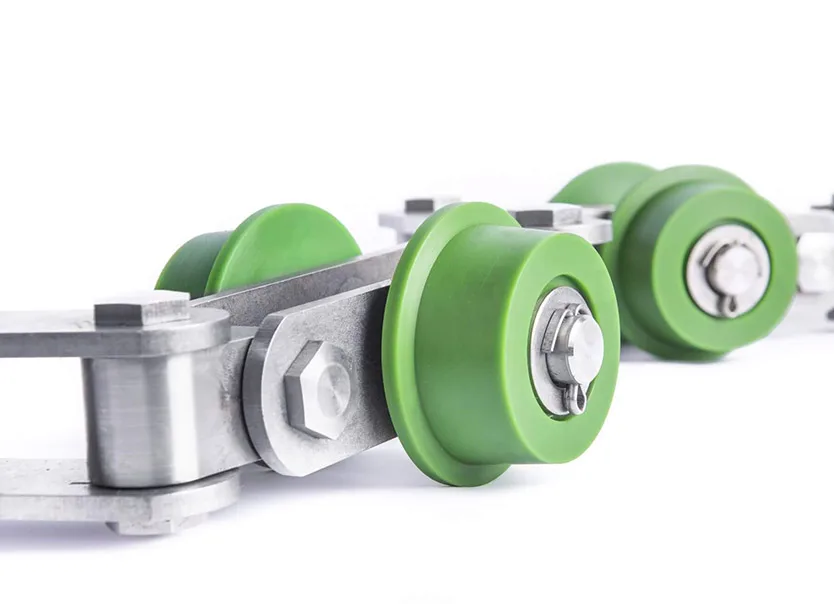
Hygienic cooling with stainless steel chains
The use of stainless steel chains in refrigeration cells provides a significant solution for improved hygiene and efficiency. Unlike traditional galvanized chains, stainless steel chains eliminate the need for regular maintenance and lubrication, significantly reducing downtime. This leads to streamlined production and increased operational efficiency. Additionally, the stainless steel design minimizes the risk of fat leakage and contamination on the meat, promoting a hygienic working environment and supporting compliance with food safety standards. With stainless steel chains, slaughterhouses can optimize their processes, increase productivity, and ensure the quality of their products.
- Increased hygiene
- Maintenance-free



